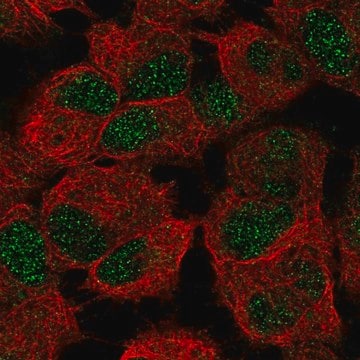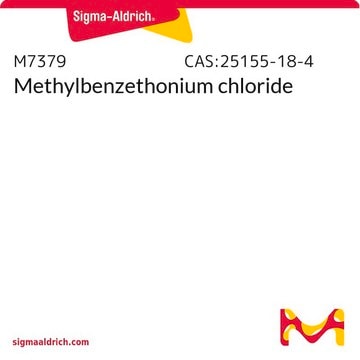C8104
Monoclonal Anti-Ceramide antibody produced in mouse
clone MID 15B4, purified immunoglobulin, buffered aqueous solution
Synonyme(s) :
Ceramide Antibody, Ceramide Antibody - Monoclonal Anti-Ceramide antibody produced in mouse
About This Item
Produits recommandés
Source biologique
mouse
Niveau de qualité
Conjugué
unconjugated
Forme d'anticorps
purified immunoglobulin
Type de produit anticorps
primary antibodies
Clone
MID 15B4, monoclonal
Forme
buffered aqueous solution
Technique(s)
immunohistochemistry (frozen sections): suitable
indirect ELISA: 1:10
Isotype
IgM
Conditions d'expédition
wet ice
Température de stockage
2-8°C
Modification post-traductionnelle de la cible
unmodified
Catégories apparentées
Description générale
Spécificité
Immunogène
Application
- immunohistochemistry
- immunolabeling in electron microscopy
- enzyme-linked immunosorbent assay (ELISA)
- immunoblotting
- immunoprecipitation
- as a probe to determine the presence and roles of ceramide in sphingomyelin pathway signaling and the regulation of protein phosphorylation.
Actions biochimiques/physiologiques
Forme physique
Notes préparatoires
Remarque sur l'analyse
Clause de non-responsabilité
Not finding the right product?
Try our Outil de sélection de produits.
Code de la classe de stockage
10 - Combustible liquids
Point d'éclair (°F)
Not applicable
Point d'éclair (°C)
Not applicable
Certificats d'analyse (COA)
Recherchez un Certificats d'analyse (COA) en saisissant le numéro de lot du produit. Les numéros de lot figurent sur l'étiquette du produit après les mots "Lot" ou "Batch".
Déjà en possession de ce produit ?
Retrouvez la documentation relative aux produits que vous avez récemment achetés dans la Bibliothèque de documents.
Les clients ont également consulté
Notre équipe de scientifiques dispose d'une expérience dans tous les secteurs de la recherche, notamment en sciences de la vie, science des matériaux, synthèse chimique, chromatographie, analyse et dans de nombreux autres domaines..
Contacter notre Service technique









